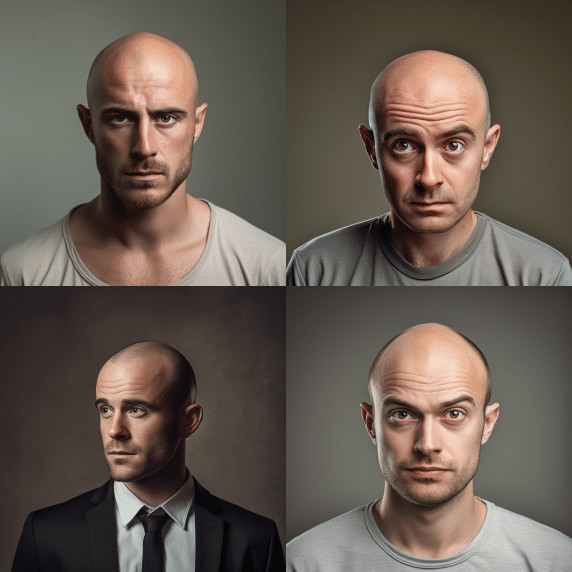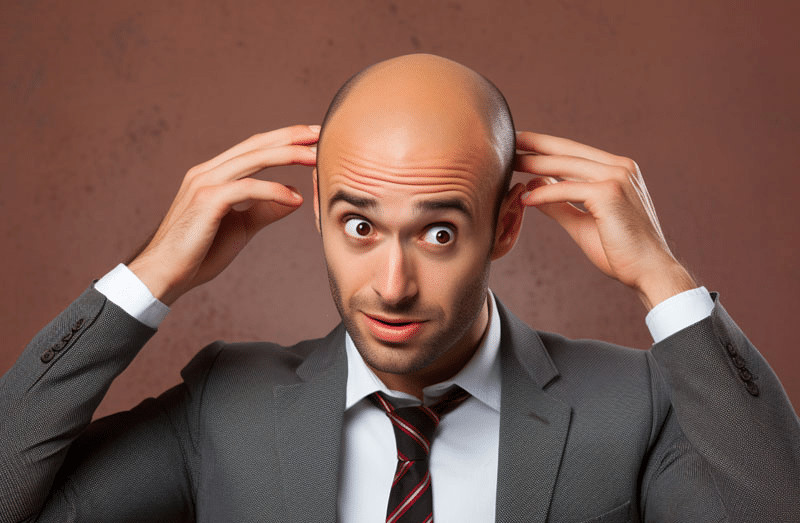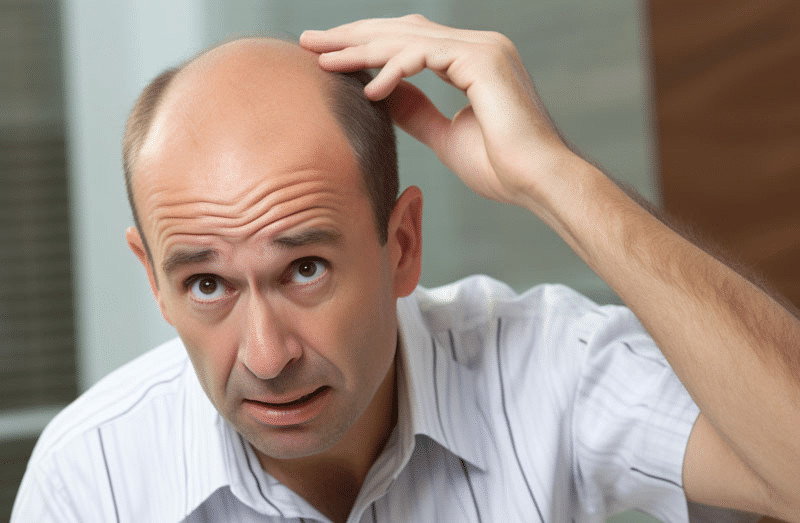If you’re tired of hair loss controlling your life and self-image, it’s time to take action. Don’t just accept balding as a part of aging or genetics. With advancements in technology and skilled surgeons, there are now permanent and natural-looking solutions for your hair loss permanent solution and replacement in Los Angeles.
At Best Hair Transplant in Redondo Beach, we understand the physical and emotional impact of hair loss. That’s why we offer personalized treatment plans and affordable options for hair replacement in Los Angeles.
Increase Hair Thickness with FUE & FUT Surgery
One option is the Follicular Unit Extraction (FUE) procedure, where individual hair follicles are extracted from the scalp and transplanted to areas with thinning or balding hair. This technique allows for precise placement of hair and minimal scarring, making it a popular choice among patients.
Another option is the Follicular Unit Transplant (FUT) procedure, where a strip of skin with healthy hair follicles is removed from the donor area and transplanted onto the thinning or balding areas. This method is often more cost-effective and can provide a larger number of grafts in one session.

Are There Other Options?
While hair transplants are the most effective and permanent solution for balding and hair loss, there are a few other options that can help in the meantime. These include topical treatments, such as minoxidil (Rogaine) and finasteride (Propecia), which can slow down hair loss and stimulate hair regrowth too.
Scalp micro pigmentation is another popular option, which involves tattooing tiny dots on the scalp to mimic the look of hair follicles. While this can provide a temporary solution for thinning areas, it does not actually regrow hair.
It’s important to note that these options may have side effects and are not guaranteed to work for everyone. They also require continuous use, making them a long-term investment.
Why Hair Transplants for Balding and Thin Hair?
Hair transplants are a popular choice for balding and hair loss because they offer a permanent solution with natural-looking results. With the FUE and FUT procedures, you can have your own hair follicles transplanted to areas of thinning or balding hair, allowing for a fuller and more youthful appearance.
These procedures also require minimal downtime and scarring, making them a convenient option for busy individuals. Plus, with advancements in technology and techniques, the results are becoming even more natural-looking and seamless.
Also the Best Hair Transplant in Redondo Beach, we are dedicated to providing personalized and affordable hair replacement options for our patients in Los Angeles. We believe that everyone deserves to feel confident and comfortable in their own skin, and we’re here to help make it happen.
Understanding hair loss
While hair loss is often associated with aging, it can actually affect people of all ages and genders. It’s estimated that 40% of men will have noticeable hair loss by the age of 35, and this percentage increases as they get older.
There are many factors that can contribute to hair loss, including genetics, hormonal changes, medical conditions, and even stress. This is why it’s important to address hair loss as soon as possible, as it may be a sign of an underlying health issue.
Hair loss can also have a significant impact on one’s self-esteem and confidence. It can make individuals feel less attractive and affect their social interactions and relationships. That’s why finding the right solution for hair replacement in Los Angeles is crucial for those experiencing significant hair loss here.

What are the types of hair loss?
There are several types of hair loss, each with its own causes and characteristics. The most common type slow hair loss is male or female pattern baldness, also known as androgenetic alopecia. This occurs when the hormone dihydrotestosterone (DHT) shrinks hair cosmetics follicles, leading to thinner and shorter hair growth.
Another type is alopecia areata, an autoimmune disorder where the body’s immune system attacks hair follicles, causing patches of hair loss. This can progress to alopecia totalis or universalis, which is when all hair on the scalp or entire body is lost.
Telogen effluvium is a condition where large amounts of hair shed at once due to stress or medical conditions. This type of hair loss is often temporary and can be reversed with proper treatment.
Scarring alopecia, also known as cicatricial alopecia, occurs when hair follicles are destroyed and replaced with scar tissue. This prevents new hair growth and is typically permanent.
It’s important to consult a doctor or hair loss specialist to determine the type of hair loss and appropriate treatment options. Depending on the cause and severity of hair loss, different solutions may be recommended, including topical treatments or hair transplants.
What causes hair loss?
As mentioned earlier, hair loss can be caused by a variety of factors. Genetics plays a significant role, as male and female pattern baldness is often inherited from family members. Hormonal changes, such as those during pregnancy or menopause, can also lead to temporary or permanent hair loss.
Certain medical conditions and treatments can also cause hair loss. This includes thyroid disorders, scalp infections, and chemotherapy. In some cases, hair loss may be a side effect of medication.
Lifestyle factors can also contribute to hair loss. Poor nutrition and crash dieting can lead to vitamin deficiencies that affect hair growth. Stress is another common factor, as it can disrupt the normal hair growth cycle and cause excessive hair shedding too.
In some cases, hair loss may be a symptom of an underlying health issue. This is why it’s important to consult a doctor or hair loss specialist if you notice significant hair thinning or shedding.
Can itchy scalp cause hair loss?

While an itchy scalp can be uncomfortable and annoying, it is not necessarily a direct cause of hair loss. However, constantly scratching the scalp can lead to temporary hair breakage or damage, which may make hair appear thinner.
An itchy scalp may also be a symptom of a larger issue that could potentially lead to hair loss. This includes conditions like scalp psoriasis, seborrheic dermatitis, or fungal infections. These conditions can damage hair follicles and affect hair growth.
It’s important to address any scalp irritation or itchiness with a doctor or dermatologist to properly diagnose and treat any underlying issues. They may recommend medicated shampoos, topical treatments, or other solutions to reduce itchiness and promote healthy hair growth.
Is hair loss in women different than in men?
While hair loss can affect both men and women, the causes and patterns of hair loss may differ between genders. Male pattern baldness is typically characterized by a receding hairline and thinning hair down at the crown of the head. Female pattern baldness, on the other hand, often results in overall thinning of the hair without a distinct pattern.
Women may also experience hair loss due to hormonal changes, such as those during pregnancy or menopause. This can lead to temporary hair thinning but is usually reversible.
Certain hairstyles and hair treatments may contribute to hair loss in women. Wearing tight hairstyles or using harsh chemicals on the hair can damage follicles and lead to breakage and shedding.
Moreover, women tend to experience more emotional and psychological impacts from hair loss compared to men. It can affect their self-esteem and confidence, leading to social and relationship challenges.
What is male pattern baldness?
Male pattern baldness, also known as androgenetic alopecia, is the most common type of hair loss in men. It typically begins with a receding hairline and thinning at the crown of the head, eventually resulting in partial or complete baldness.
This type of hair loss is caused by genetics and hormonal changes. The hormone dihydrotestosterone (DHT) is responsible for shrinking hair follicles, which leads to shorter and thinner hair growth.
Male pattern baldness can start as early as the teenage years, but typically becomes more noticeable with age. It affects approximately 50% of men by the age of 50.
There are various treatments available for male pattern baldness, including topical medications, oral medication, and hair transplant surgery. It’s important to consult a doctor or hair loss specialist to determine the best course of treatment based on individual needs and preferences.

How common is male pattern baldness?
As mentioned earlier, male pattern baldness is the most common type of hair loss in men. It affects approximately 50% of men by the age of 50 and becomes more prevalent with age.
In fact, research suggests that by the age of 35, about two-thirds of men will experience some degree of hair loss. By the age of 50, this number increases to about 85%.
Male pattern baldness is more common in certain ethnicities, with men of Asian descent having the lowest rates of hair density and men of African descent having the highest rates. This further emphasizes the role of genetics in hair loss.
While male pattern baldness may be a common occurrence, it can still have significant impacts on a person’s self-esteem and confidence. It’s important for individuals to seek appropriate treatment options and support to address any emotional or psychological effects of hair loss.
There are also resources available, such as support groups and counseling, to help cope with the challenges of male and female pattern hair loss.
Wondering how to stop losing hair?
The key to preventing hair loss is identifying the underlying cause and addressing it properly. This may involve seeking medical treatment for conditions like thyroid disorders or scalp infections.
In addition to dietary supplements, maintaining a healthy lifestyle can also help prevent hair loss. Eating a balanced diet rich in vitamins and minerals can promote healthy hair growth. Avoiding crash diets and managing stress levels can also prevent vitamin deficiencies and disruptions in the hair growth cycle.
For individuals with male pattern baldness, there are various treatment options available. Medications like minoxidil and finasteride can help slow down or stop hair loss. Hair transplant surgery is also a viable option for those looking to restore lost hair.
Consult with a doctor or hair loss specialist to determine the best course of action based on individual needs and preferences. With proper care and treatment, it is possible to prevent further hair loss and promote healthy hair growth.

Is it possible to reverse hair loss and thinning hair?
The possibility of reversing hair loss depends on the underlying cause. In some cases, such as temporary hair loss due to hormonal changes or stress, it is possible for the hair to grow back once the root cause stimulate hair growth is addressed.
However, if the hair follicles have been damaged or destroyed, it may be more difficult to reverse hair loss. This is especially true for male pattern baldness, as the hair follicles shrink and eventually stop producing hair.
With that being said, there are various treatments available that can help promote hair growth and potentially reverse some of the effects of hair loss. Topical medications like minoxidil can stimulate hair follicles to produce thicker and longer hair strands. In addition, oral medication like finasteride can help slow down or stop hair loss by blocking the production of DHT.
Hair transplant surgery is another option for those looking to restore lost hair. This involves taking healthy hair follicles from other parts of the scalp and transplanting them to areas where there is thinning or baldness.

Don’t Accept Balding – Get a Hair Transplant
For those experiencing hair loss, especially male pattern baldness, a full hair follicle transplant may be the best option for restoring lost hair and confidence.
At Best Hair Transplant Los Angeles, we offer advanced hair transplant procedures using state-of-the-art technology and techniques. Our team of experienced and skilled hair transplant surgeons can help restore a full head of hair with natural-looking results.
We understand that each individual’s needs are unique and strive to provide personalized solutions for hair loss. We offer free consultations to assess candidacy and discuss the various hair loss treatment and options available for both men and women.
The procedure takes several hours, depending on the extent of baldness and the number of grafts needed. The transplanted hair will initially fall out (as a normal part of the hair growth cycle), and new hair will start to grow within a few months. The final results can be seen in about 12-18 months, as over-the-counter, transplanted hairs continue to grow and blend in with the existing hair.
